The 1960s, a time of social and political change, saw the birth of the Australian Performing Group (APG). A self-managed collective that grew out of the increasing radicalism at Melbourne and Monash universities, it produced theatre that was socialist, anti-racist, anti-capitalist and anti-sexist.
Dimboola, H82.20/87, advertises the 1973 production of
Jack Hibberd’s Dimboola. When first performed in August
of 1969 it was a unique experiment in audience participation
The title of Gabrielle Wolf’s history of the group, Make it Australian, underscored one of its major aims – to produce and promote Australian drama. In fact their work fell into three distinctive categories: new Australian work; group developed shows; and new European and American writers.
At the time, mainstream theatre tended to be predominantly Anglo-Celtic and respectable. APG writers like John Romeril, Jack Hibberd, Barry Oakley and Barry Dickins worked with actors such as Max Gillies, Sue Ingleton, Bruce Spence, and Evelyn Krape to challenge audiences with their brand of national theatre that was of, and by, the people.
Betty Can Jump, H82.20/495, was the first women’s group show in Australia. Feminism had an enormous influence on the work of the APG. This poster advertises the play presented by the Australian Performing Group, Carlton Women’s Lib, at the Pram Factory, January – February 1972
Their first performance, Brainrot: an evening of pathology and violence, love and friendship (by Jack Hibberd) was at the University of Melbourne’s Prince Philip Theatre in April 1968 but by June, the APG had started performing at Carlton’s La Mama Theatre. Inspired by a visit to New York and a vibrant theatre with the same name, it was founded the previous year by Betty Burstall as a venue to support emerging Australian theatre. La Mama was a perfect fit.
Performed at the Pram Factory in 1975, The Golden Holden, H82.20/165, written by John Romeril, was about the takeover of the manufacture of Holden cars by General Motors in 1947. The play is an example of the APG’s concern with events in Australia’s social history
In 1970 the APG was on the move again. It took up residence in a former pram factory in Drummond Street, Carlton, opening in December with Marvellous Melbourne. It was to remain here until the sale of the building in 1981 marked the death of the Pram Factory and the group disbanded.
As well as performances at the Front and Back Theatres of the Pram Factory, the APG’s other concerns included lunch time factory shows, strike meetings (particularly work-ins), street theatre at demonstrations and marches, puppetry, pantomime, theatre restaurant shows, video and school tours. Circus Oz, the ‘rock’n’roll circus’, also sprung from the APG as a ‘collective within a collective’.
The State Library of Victoria acquired the APG archive in 1981, where it is housed in the Australian Manuscripts Collection at MS 11436. The posters from the APG archive have recently been digitised and can be viewed online.
The Creature from the Black Lagoon, H82.20/146 , was performed by Nightshift, a collective within the APG with a special interest in performing plays by modern German writers like Fassbinder, Hanke and Kreutz. This poster advertises the play by R.W. Fassbinder, performed at the Pram Factory in 1972.
The Young and the Jobless, H82.20/161. The members of the APG collaborated with each other and with community groups to produce shows of social relevance. The Young and the Jobless was created by members of the APG and a group of unemployed people. It toured Victorian and NSW schools. This poster advertises the play performed in 1978.
Smack in the Dacks,H82.20/95, advertises the performance of Smack in the Dacks by the Soapbox Circus (with music by Matchbox), 1977. Soapbox Circus combined with New Circus to form Circus Oz.
Written by Kerri Hall, Librarian, Australian History and Literature Team
and Olga Tsara, Librarian, Manuscripts Collection.

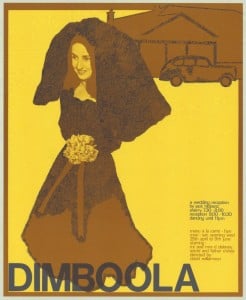
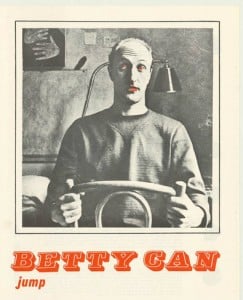
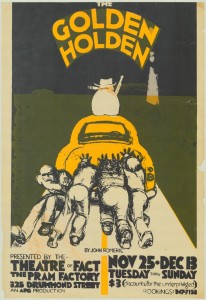

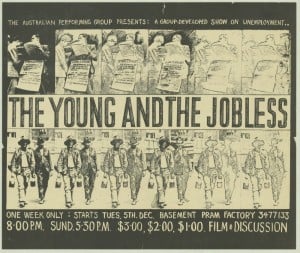
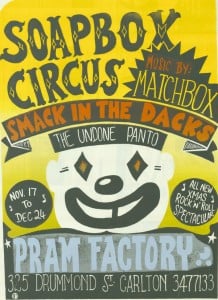

I have two La Mama posters from the 1972 production of Jack Hibberd’s Stretch of the Imagination. Does the library want them? Judy Brett
Hi Judith,
Thanks for thinking of the Library. A librarian will be in touch shortly to discuss further,
Paul